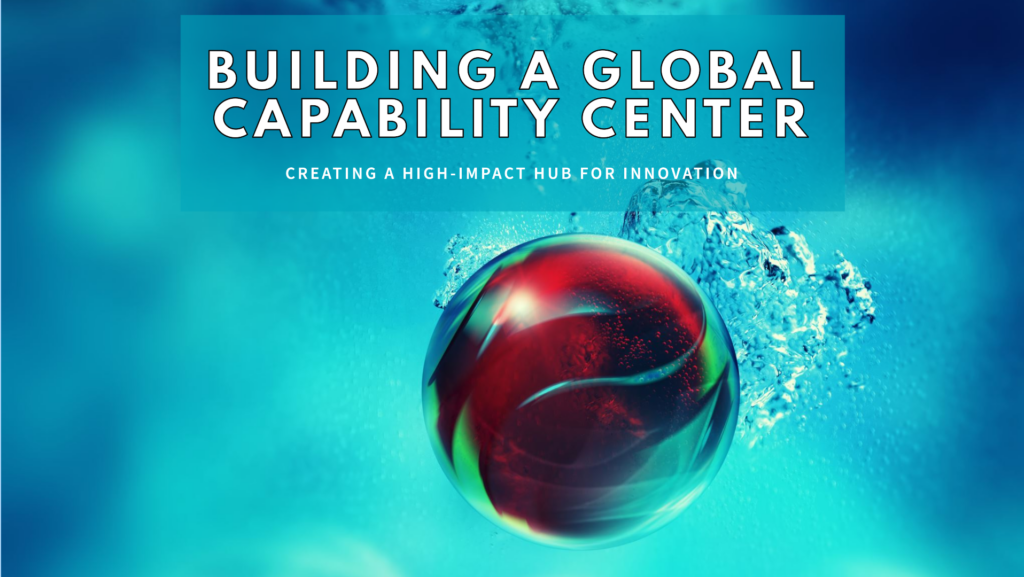Building a High-Impact Global Capability Center: Best Practices and Future Trends
Third in a three-part series.
Introduction
A Global Capability Center (GCC) is a strategic asset that enhances innovation, efficiency, and global competitiveness. Organizations must adopt best practices to unlock its full potential while staying ahead of emerging trends. This article explores proven strategies and key trends shaping the future of GCCs. Above all, success hinges on experienced leadership.
Identifying the Best Leader
In my experience, selecting the right leader is the most critical factor in a GCC’s success. The ideal candidate should be a trusted senior executive within the global organization—someone who has built rapport with company leadership and understands both corporate expectations and regional dynamics.
A successful GCC leader should share a cultural background with the country where the GCC is based and be deeply invested in making it thrive. Initially, they serve as the bridge between the U.S. development team and the newly formed GCC, which may lack experience with headquarters’ expectations.
This leader must be involved in every phase—from requirements gathering to delivery—as a translator of business needs into the technical execution and a quality gatekeeper before the final handoff. Without this hands-on leadership, achieving a strong ROI from a GCC strategy becomes far more challenging.
Operational Excellence and Adapting to Local Realities
Achieving operational excellence is fundamental to maximizing a GCC’s value. This involves clear KPIs, regular performance evaluations, and a commitment to continuous improvement, including adopting processes to local preferences. Health checks and value assessments help identify optimization opportunities and maintain high performance.
For example, a US company focusing on software development might successfully implement agile methodologies, but a hybrid approach at the GCC will make more sense. A hybrid approach requires developing the design first, getting it approved by the global product management team, and incorporating their feedback until final approval, which is done in a waterfall manner. Then, proceeding to an agile methodology during the active development phase to improve collaboration and speed has proven to work at GCCs. Regular sprints and feedback loops ensure that projects remain on track and deliver results that align with business objectives. Leadership is essential here; a capable leader ensures these practices are embedded into the culture, driving efficiency and quality.
Ownership of the Entire Application
Too often, companies treat their GCC as an “extended arm” rather than fully integrating it into the global team. Routine tasks like coding, testing, and DevOps are assigned, while strategic roles—such as product design, customer feedback, and market analysis—remain centralized at headquarters. This dynamic shields the GCC from direct customer interactions, leaving the U.S. teams solely responsible for quality control.
A GCC must own the entire application lifecycle to operate at its full potential. This means facing customers directly, receiving feedback firsthand, and being accountable for the quality of deliverables. Removing these silos eliminates finger-pointing and fosters true ownership within the GCC.
Encouraging Innovation
Innovation is the driving force behind a successful GCC. Fostering a culture of experimentation and investing in R&D empowers teams to develop groundbreaking solutions. Companies that prioritize innovation see measurable impact internally and in the marketplace.
For instance, at one GCC I managed, specializing in clean energy solutions, we introduced an internal hackathon to encourage employees to brainstorm and develop green technologies. The result was a new AI-powered tool that optimized energy consumption, delivering significant client cost savings. Leaders who champion such initiatives inspire teams to push boundaries and innovate.
Future Trends
As we look ahead, several trends are shaping the trajectory of GCCs:
- Digital Transformation: AI, automation, and data analytics are central to the next generation of GCCs. These technologies enable GCCs to deliver more innovative solutions and enhance decision-making capabilities.
- Sustainability: GCCs increasingly adopt eco-friendly practices, aligning with global sustainability goals. For example, many centers are implementing energy-efficient operations and reducing their carbon footprint.
- Diverse Talent Pools: Expanding the talent base to include specialized roles across various industries ensures agility and adaptability. This diversification strengthens the GCC’s ability to meet evolving market demands.
- Best-Sourcing Models: A hybrid approach that balances in-house expertise with outsourced capabilities allows GCCs to scale efficiently while maintaining quality.
- Leadership Development: As the complexity of GCC operations increases, strong leaders will be critical to navigating challenges and inspiring teams. Organizations that invest in leadership development programs will be better positioned to sustain success.
Conclusion
GCCs are no longer just support centers—they are strategic powerhouses driving business transformation and innovation. By implementing best practices and adapting to emerging trends, organizations can unlock unprecedented value from their GCCs.
Let’s connect and discuss how GCCs are shaping the future of global business. Contact me on LinkedIn and check out my Professional Portfolio. It’s a work in progress, and I’d love to hear your feedback.
About the Author
With nearly two decades of experience in GCC strategy and operations, Venki Ramachandran has led teams of over 200 engineers while aligning technology, talent, and business objectives to drive success. His expertise spans performance optimization, emerging technology adoption, and sustainable business growth. As an innovator and startup founder, he has also helped organizations expand into APAC markets, delivering scalable solutions that create long-term impact.

